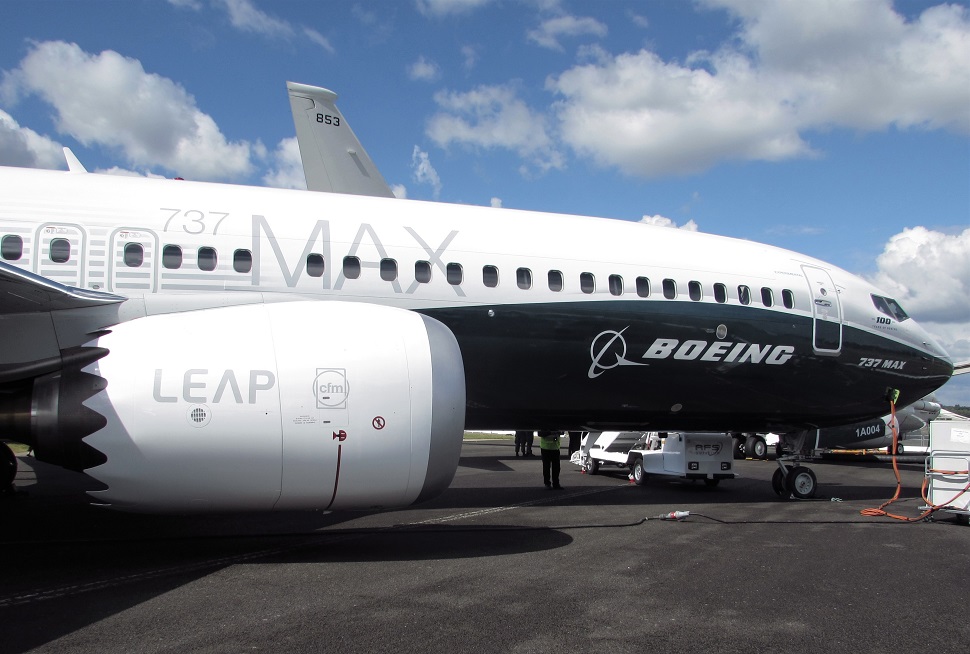Recent events have signalled to financial analysts that the global grounding of the 737 Max could last notably longer than previously expected, potentially costing Boeing hundreds of millions of additional dollars.
Most notable of those events was the company’s 5 April announcement that it will cut 737 production to 42 aircraft monthly by mid-April, down from 52 month.
Though suppliers will likely be affected, that impact is limited – for now – by Boeing’s decision to keep the supply chain humming at the 52-aircraft rate.
Boeing will likely release more details about the grounding’s financial impact when it issues its first quarter financial results on 24 April.
But estimates of when the 737 Max will return to the skies vary widely, with some suggesting the grounding could extend well into the back half of 2019.
JP Morgan believes the Max will be grounded until September, the financial services firm said in a 9 April research note. “Boeing’s 737 production cut reflects rising uncertainty about the length of the grounding," say JP Morgan analysts.
JP Morgan wrote in a separate 8 April update: “Prospects for a quick end to the grounding faded throughout last week.”

FlightGlobal
Canadian financial services company Canaccord Genuity doubts the aircraft will return to service until “at least July 2019 in a best-case scenario”, according to a 7 April research update. “We now view the grounding of the 737 Max fleet as longer than we had been anticipating.”
Several recent signals point in that direction. At issue is Boeing’s development and regulatory approval of an update for the 737 Max’s manoeuvring characteristics augmentation system (MCAS), the system implicated in the crashes two 737 Max 8s operated by Lion Air and Ethiopian Airlines.
In mid-March Boeing said it would deploy the update in the “coming weeks”, and the FAA said it would mandate the update no later than April.
That timeline seemed to slip on 1 April when the FAA referred to “coming weeks” to indicate when it expects to receive Boeing’s final update for review.
Then late last week Boeing said it will cut 737 production by 19%, from 52- to 42-aircraft monthly, by mid-April. Subsequently, American Airlines freshly extended its Max cancellations into June.
“We were not expecting this announcement, but it’s probably the right move to slow things down for the long-term good,” Wolfe Research said of the production cut in an 8 April report. “We continue to believe Max deliveries will resume in July.”
The production cut was a “surprise move”, says Canaccord. “It appears that the move… reflects greater regulatory uncertainty and pressure around the timing of the grounding, and potentially more complexity associated with the software fix.”
FINANCIAL FALLOUT
The financial fallout is adding up.
Canaccord estimates the grounding costs Boeing $1.2 billion monthly, including lost revenue and potential compensation to carriers for being unable to operate their aircraft.
Boeing should recover some of those costs once deliveries resume, Canaccord notes.
JP Morgan estimates lost revenue and costs associated with maintaining 737 production without delivering aircraft could hit $1.5 billion monthly.
Similarly, investment bank Cowen estimates a three-month grounding equates to a $5 billion hit.
In addition to the monthly impact, the crashes and software fix could cost Boeing another $2.2 billion, Canaccord estimates.
That figure includes $1.7 billion in compensation to families (assuming $5 million for each of the 346 people killed in two recent 737 Max crashes) and $476 million to develop, certify and install the software update.
In 2019, Boeing could take a $1-$2 billion hit, which is 6-12% of the $17-$17.5 billion in operating cash it previously expected to generate in 2019, writes Canaccord.
But Boeing has massive financial resources, earning a $10 billion profit in 2018 and closing that year with $7.6 billion in cash and cash equivalents.
“We believe [Boeing] is feeling much more regulatory and political pressure on the Max than it anticipated,” Canaccord says.
Still, analysts believe Boeing and the Max will rebound from short-term financial and reputational harm.
“We think most global carriers are still eager to have the aircraft, provided it is safe,” states JP Morgan’s report. “Our base case remains that Boeing will work through Max challenges over several months with little change to long-term Max demand or core returns.”
Other open questions include how fast Boeing can return to producing 52 aircraft monthly once the grounding lifts, and where it might move to 57 aircraft monthly, the rate it previously hoped to reach in 2019.
Canaccord believes Boeing will not hit the 57-aircraft rate until 2020.
But Boeing has positioned itself to return to 52-aircraft monthly by keeping major suppliers running at that rate, analysts note.
Late last week both CFM International, which makes the 737 Max’s Leap-1B engines, and Spirit AeroSystems, which makes 737 fuselages, said they were maintaining production at current rates.
Canaccord calls that news particularly welcome for Spirit, which derives an oversized portion of its revenue from the 737 programme.
But Spirit could still suffer at 52-aircraft monthly, a rate at which it would sell 40 fewer fuselages this year (a $220 million value) than at the 57-aircraft rate Boeing had planned, Canaccord says.
“We believe [Spirit] will face incremental costs, and the loss of the volume increase on the 737 is material,” says Canaccord.
Source: Cirium Dashboard



















